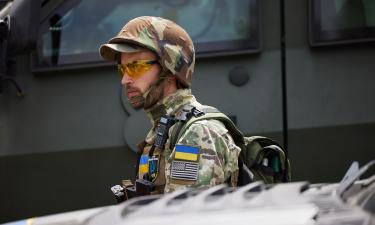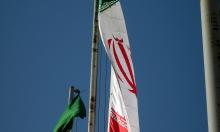Arctic: Canada's Sabre-Rattling and Russia’s Strategic Interests
The recently completed Operation Nanook (August 6 to 26), an operation which Canada began after Russia made claims to Arctic territories in 2007, involved an unprecedented degree of collaboration among military forces from Canada, the USA and Denmark: NATO member states. Yet is there not a commercial interest behind the sabre-rattling?

There are five states with Arctic claims. Four of them are NATO member states (the three mentioned above plus Norway). The other is Russia. Operation Nanook this year took a new turn: far from being a purely Canadian exercise, it involved unprecedented cooperation among three NATO member states.
It comes as no surprise to learn that the Arctic is home to some 30 per cent of undiscovered natural gas fields and around 13 per cent of undiscovered oil. It also comes as no surprise that the three NATO members seem to be settling their own differences in the Arctic (Canada has disputes with both the USA and Denmark) and in a sinister twist of the tale, are raising the stakes into what is gradually becoming a NATO v. Russia scenario.
Canada has already made bellicose claims that it is concerned about Russia’s “desire to work outside the international framework. That is obviously why we are taking a range of measures, including military measures, to strengthen our sovereignty in the North” (Canadian Minister of Defence Peter MacKay, 2008). Since then Canada has regularly scrambled jets to “intercept” Russian aircraft flying in international airspace.
This year’s military operation pushed far further to the north than the previous years’ exercises and was held in an area including the Alpha Mendeleev Ridge – one of Russia’s Arctic claims.
Yet how real is Canada’s sabre rattling, and to what extent is there a commercial element behind the raising of the stakes? After all, Canada’s CF-18 fleet is due for replacement (it is 30 years old) and now is the time for a lucrative arms deal to acquire the USA’s F-35 Lightning fifth generation Stealth fighter.
Regarding Russia’s claims, the Arktika Expedition in 2007 when a Russian flag was placed on the sea bed under the North Pole by the Mir submersible, was part of the work being undertaken under the UN Convention of the Law of the Sea, part of the process in which Russia lays claim to submerged ridges which prove the area in question is an extension of Russian territory.
The claim defends that the eastern Lomonosov Ridge is an extension of the Siberian Continental Shelf and this claim does not enter the Arctic sector of any other Arctic coastal State. This claim, together with the position that the Mendeleev Ridge is an extension of the Eurasian Continent, has been submitted to the UN Commission on the Limits of the Continental Shelf in accordance with Article 76, Paragraph 8 of the UN Convention on the Law of the Sea.
As a result of the Arktika Expedition, it was declared by Russia’s Natural Resources Ministry in September 2007 that “Preliminary results of an analysis of the Earth’s Crust...have confirmed that the crust structure of the Lomonosov Ridge corresponds to the world analogues of the continental crust and it is therefore part of the Russian Federation’s adjacent continental shelf”.
The Ilulissat Declaration made in Greenland among the five Arctic States in May 2008 declares that all demarcation issues should be resolved on a bilateral basis between contesting parties.
Since Russia’s claims enter the territory of nobody except the Russian Federation itself, then why does Canada get steamed up making bellicose remarks and scrambling warplanes? Who is benefiting from the forthcoming arms sales and why is the Canadian taxpayer footing the bill for the exercises?
Timothy BANCROFT-HINCHEY
PRAVDA.Ru
Subscribe to Pravda.Ru Telegram channel, Facebook, RSS!





